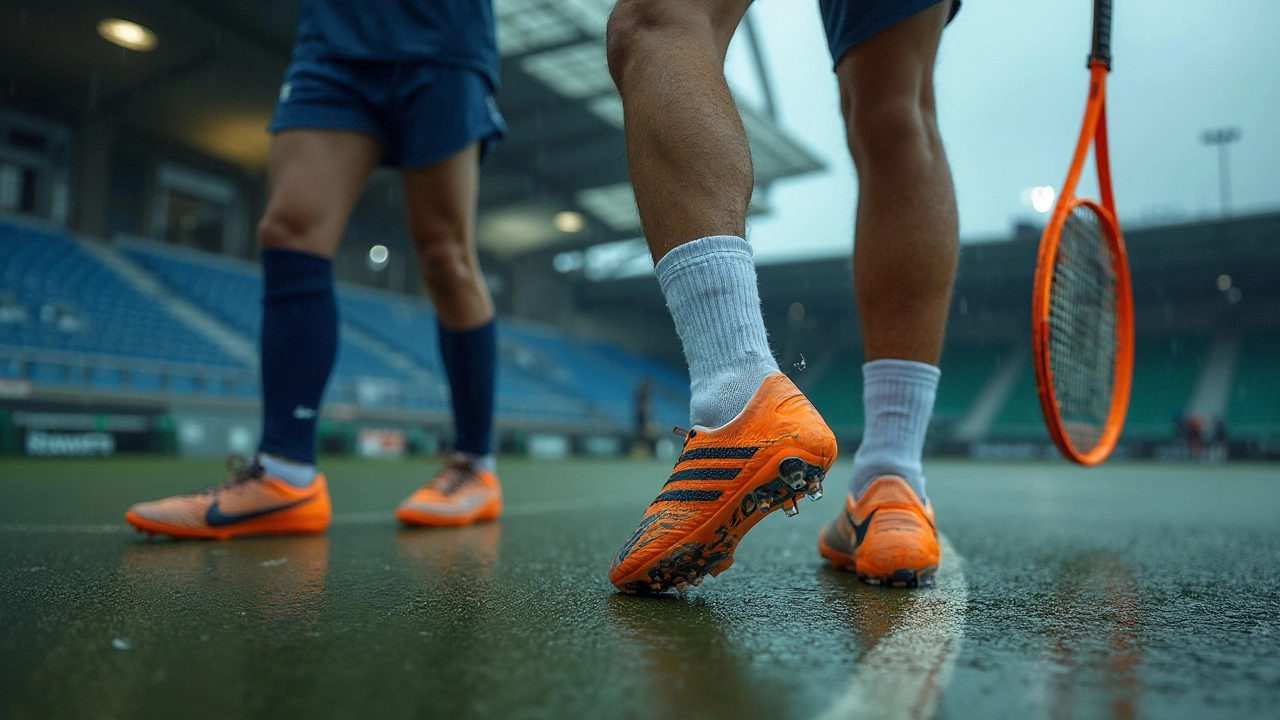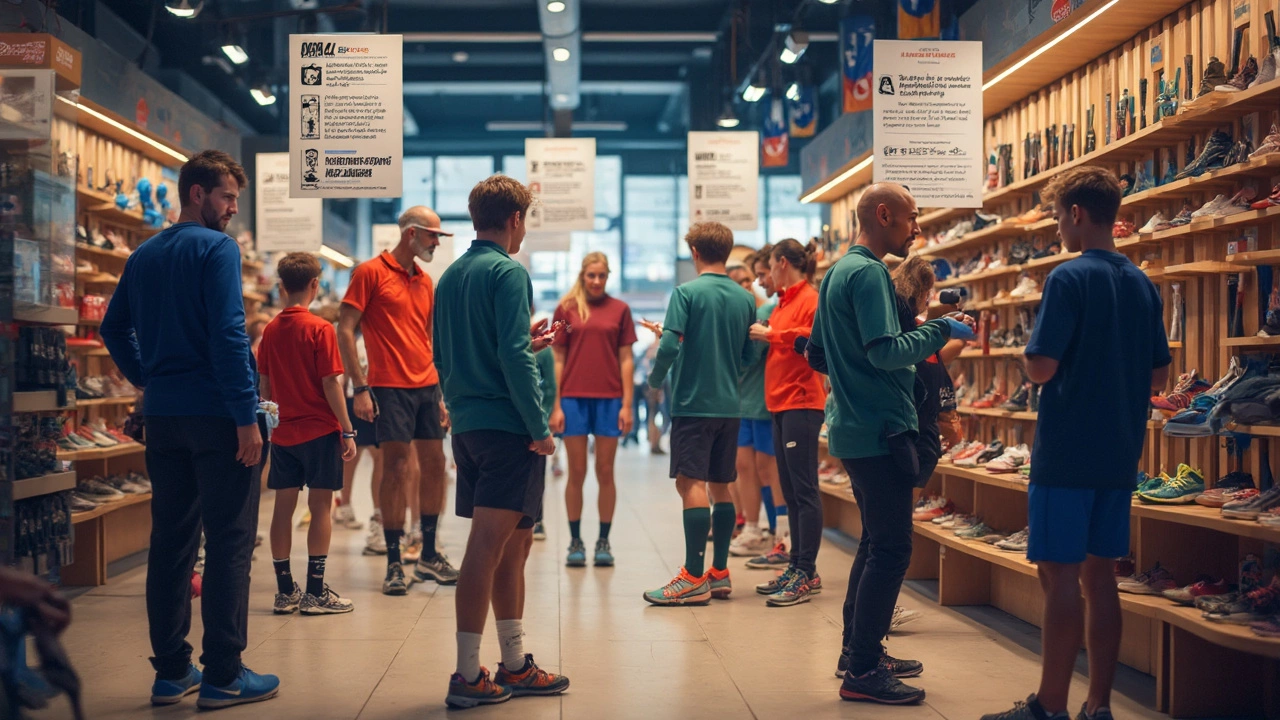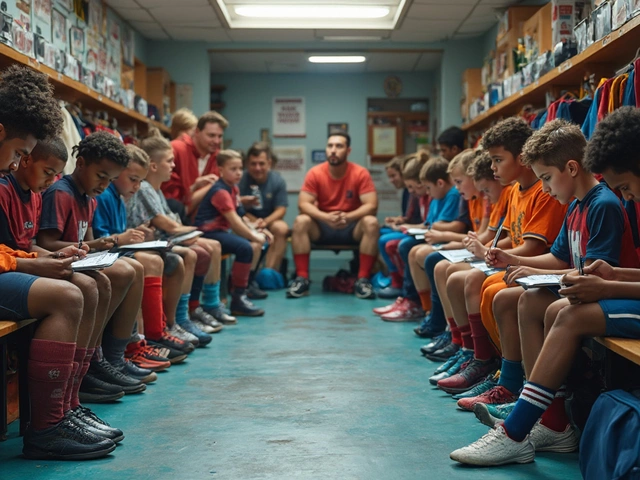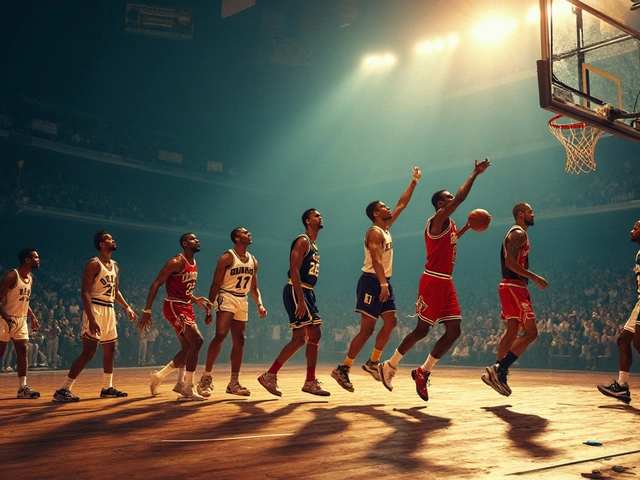
Sports Equipment June 23, 2025
How Equipment Affects Sports Performance and Experience
If you’ve ever watched a soccer game and wondered why some players seem almost glued to the ball, take a look at their shoes. Good equipment isn’t just for show—it can help you move better, play safer, and even boost confidence. Ever tried running in regular sneakers and then switched to proper running shoes? That difference in comfort and support might shave seconds off your lap time.
It’s not only about high-tech gadgets either. For every sport, from basketball to tennis, the right gear can fix all sorts of problems you might not even notice at first. For example, a beginner tennis player using a heavy old racket will probably tire out way faster than someone playing with a lightweight modern one. Even the stitching in a baseball glove affects how well you catch and throw. That’s how deep equipment goes in shaping your experience.
Wondering if it’s all hype? Think about swimming records: nearly all the times fell after the introduction of performance swimsuits like Speedo’s Fastskin. Tech and design can turn decent results into gold-medal finishes. If you aren’t paying attention to your gear, you might be making your favorite sport harder than it needs to be.
Why Equipment Matters
Think equipment is just for the pros? Not even close. The gear you choose has a direct impact on performance, comfort, and injury risk—whether you’re hitting the local court or competing in a championship. Let’s break it down with clear, real results.
First, look at the basics. In basketball, the grip and bounce of a ball change depending on its material and air pressure. College hoops require a ball between 7.5 and 8.5 PSI for reliable dribbling and shooting. A ball outside that range feels off, which can throw anyone’s game—a study from the University of Utah found that even minor changes in ball inflation affected shooting accuracy for skilled players.
Shoes are another big deal. The rise of sport-specific shoe designs—think cleats for soccer, high-tops for basketball, and spikes for track—started when coaches and athletes realized the wrong shoes led to more slips, slower sprints, and more rolled ankles. Using running shoes for basketball, for instance, gives you less support on side moves and ups your injury chances.
Some sports pretty much demand the latest gear. In pro cycling, for instance, riders often get obsessed with the tiniest weight savings. Just shaving 200 grams off a bike can make the difference up a steep hill. And in tennis, the switch from wood to graphite rackets let players hit faster serves and harder shots without extra muscle. Modern rackets also reduce the shock that travels to your arm, so you can play longer and healthier.
Don’t forget about weather-specific equipment. Football players in cold climates use gloves with tacky palms for better grip, while runners wear moisture-wicking clothes to stay dry and avoid chafing. These tweaks might look small but often separate a good day from a miserable one.
The bottom line? The right sports equipment isn’t a bonus—it’s essential. It shapes how you play, how safe you are, and whether you enjoy the game or struggle through it. Whether you’re out to win or out for fun, the gear you use always matters.
Game-Changing Innovations
If you take a close look at big moments in sports history, you’ll notice something: new tech changes the whole game. Let’s talk about the sports equipment that had a real impact.
For example, in the late 2000s, Speedo’s Fastskin swimsuit made waves—literally. These suits mimicked shark skin so well that swimmers started breaking world records in droves. FINA, swimming’s governing body, ended up banning the full-body suits after 94% of swimming medals at the 2008 Olympics went to athletes wearing them. That’s how much of a difference one piece of gear made.
Basketball shoes have seen a tech explosion too. Nike’s Air Zoom, Adidas’s Boost foam, and Puma’s NITRO cushioning help players jump higher and land softer, which reduces injuries and boosts confidence. You won’t see pros stepping onto the court in old-school canvas sneakers anymore—because why risk your ankles?
In tennis, rackets used to be made of wood, which meant they were heavy and had small sweet spots. Now, you’ve got carbon fiber frames that are way lighter, letting you react faster and hit harder. Even balls have changed. The pressurized tennis ball used at U.S. Opens since 1979 bounces more reliably, making games fairer for everyone.
Let’s see some real numbers on how new equipment shifted the needle in actual competition:
| Gear Innovation | Impact |
|---|---|
| Fastskin Swimsuits | 130+ world records broken (2008-2009) |
| Carbon Fiber Tennis Rackets | Average serve speed increased by 15% since 1980s |
| Graphene-infused Cycling Helmets | 20% reduction in impact force during crashes |
| Soccer Cleats with Stud Patterns | Players cut up to 0.2 seconds faster per turn |
Even heart rate monitors and GPS trackers changed how athletes train. Now coaches track every sprint, jump, and heartbeat, dialing in workouts to push athletes just enough without overdoing it. So if you’re thinking gear only matters for the pros, think again—the right upgrade can shave time, boost power, and sometimes even outsmart the competition.
- If you’re shopping for new gear, check if it features real innovations, not just extra cost.
- Look for pro endorsements—but dive into reviews from people at your skill level.
- Don’t fall for fads; focus on proven improvements that match your playing style or sport.
Staying up to date with what’s new in your sport could easily turn a frustrating experience into your personal best.

The Safety Factor
Bad equipment can mean a busted knee, a broken tooth, or worse. Sports are full of risks, but the right gear cuts those risks way down. Helmets, mouthguards, pads—these aren't just for pros or kids. Whether it’s biking, football, or skateboarding, good protection is a must. Take helmets: the CDC reports that wearing a bicycle helmet reduces the risk of serious head injury by nearly 60%. That's not a small number.
The design of sports equipment has turned safety gear into a science. Take football, for example—helmets now have shock-absorbing foam and face masks. In baseball, newer chest protectors help guard young players from rare but deadly heart impacts. Even running shoes get tech upgrades, like better cushioning to lower the risk of stress fractures by spreading out the force of every step.
Here’s a quick look at some key protective equipment and why it matters:
- Helmets: Used in sports from cycling to hockey, they protect against concussion and brain injury.
- Mouthguards: Lower the risk of dental injuries and even certain concussions in football and basketball.
- Shin guards and pads: Help prevent fractures and bruises in soccer, field hockey, and more.
- Proper shoes: Cut down ankle sprains and foot injuries, especially if chosen for your sport’s movement patterns.
- Goggles: In racquet sports and basketball, prevent fast-moving balls and sweaty fingers from causing eye injuries.
Data backs this up too. Check out this table showing the injury reduction from some popular gear types:
| Equipment Type | Sport | Injury Reduction (%) | Source |
|---|---|---|---|
| Helmet | Cycling | ~60 | CDC |
| Mouthguard | Football/Basketball | 30-50 | ADA |
| Shin Guards | Soccer | Up to 80 | FIFA Med Assoc |
| Cushioning Shoes | Running | 25-40 | British J Sports Med |
If you want to cut the odds of getting benched by injury, gear up right—don’t let your focus on performance undermine your safety.
Smart Choices for Every Athlete
Picking the right sports equipment isn’t just a matter of personal taste—it can literally change your performance. You don’t need to be a pro to see the difference. The first step? Match your gear to your sport and your body. For example, choosing a basketball shoe with good ankle support is key if you jump a lot, since ankle injuries make up about 15% of all basketball injuries.
Let’s get real: sometimes people grab the cheapest thing just to get started. But if you’re playing often, spending a little more usually means better design, improved safety, and often, fewer injuries. Take running shoes—research from the British Journal of Sports Medicine found that 56% of running injuries are linked to worn-out or poor-fitting shoes. That’s a lot of avoidable pain.
Here’s how to make smarter gear choices, no matter your sport:
- sports equipment should fit you, not the other way around. Try before you buy, if you can.
- Check for certified safety standards. For example, all helmets sold in the US for football have to meet the NOCSAE standards.
- Ask experienced players or coaches for brand recommendations—they often know which gear lasts and which breaks quickly.
- Think about how often you play. If you’re out there every weekend, invest in gear that’s proven to last.
- Replace equipment when it’s past its prime, especially protective gear. Even the best pads wear out and lose their edge after a few seasons.
If you want hard numbers, check out this simple comparison. Here’s how equipment upgrades have impacted athletes’ injury rates and performance:
| Sport | Equipment Upgrade | Injury Rate Change | Performance Impact |
|---|---|---|---|
| Soccer | Lighter cleats with ankle support | -23% ankle sprains (FIFA Medical Report, 2022) | Faster sprint times (average -0.4 sec per 30m) |
| Cycling | Aerodynamic helmets | -15% head injuries (CDC data) | ~5% faster time trials |
| Baseball | Composite bats | No injury increase, more home runs (MLB stats) | ~10% increase in bat speed |
In short, take a little time to research your gear. You’ll feel better, play longer, and might even surprise yourself with how much faster or safer you get. That’s money and effort well spent.




